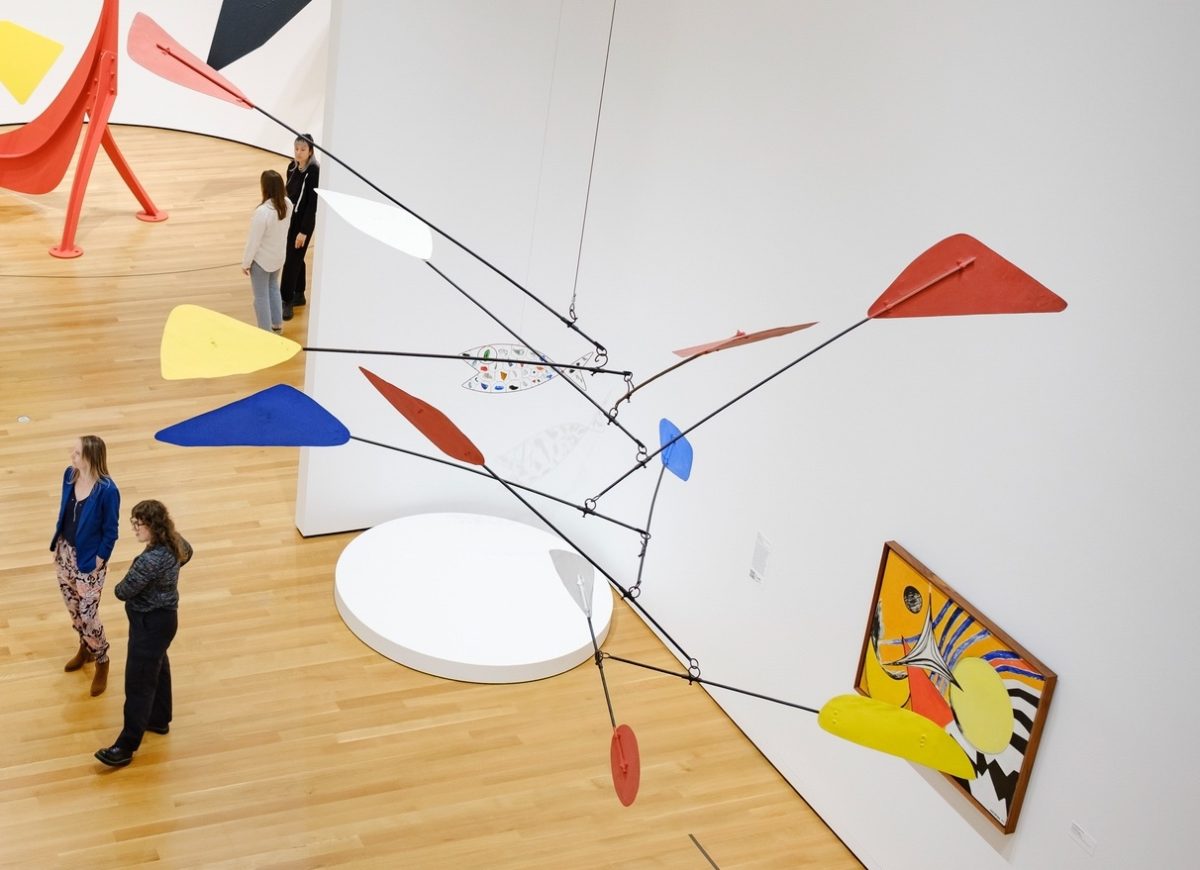Calder Smartphone Tour: Untitled (Métaboles)

Alexander Calder shares a rich history with performance art. He projected many of his ideas onto the stage, collaborating with composers, actors, and choreographers, including Martha Graham, Virgil Thomson, John Butler, and Jean Vilar. Perhaps nowhere is the expansiveness of Calder’s vision more apparent than in these collaborations, in which the disciplines of music, dance, and sculpture expand our understanding of known experience.
Calder was commissioned to create an artwork that would accompany Métaboles, a new ballet choreographed by Joseph Lazzini to music by Henri Dutilleux and produced by the Théâtre Français de la Danse. The result, Untitled (Métaboles), embodies Lazzini’s themes of variation and transformation. Its subtle movements echo the delicate movements of the figures onstage as it continually unfolds in space. The dynamic mobile made its public debut alongside the ballet’s premiere at the Odéon-Théâtre de France, Paris, in 1969. The ballet also featured costumes designed by Calder.
Calder’s interest in performance didn’t end there, however. In 1968, the year before Métaboles was realized, Calder premiered his own “ballet without dancers” known as Work in Progress at the Teatro dell’Opera in Rome. The result is approximately 19 minutes long, with Calder-designed costumes, hanging and standing mobiles, stabiles, and painted backdrops, accompanied by electronic music by three composers.
Listen to the third stop of the free smartphone tour of Calder: In Motion, The Shirley Family Collection to hear Calder Foundation President Alexander S. C. Rower discuss how considerations of space and movement played influential roles in the artist’s creation of Untitled (Métaboles). You can explore all 16 stops on the audio tour via our SoundCloud or by scanning the QR code adjacent to select works in SAM’s galleries. Reserve your tickets to see Calder: In Motion at SAM to witness how this work ‘dances’ for yourself!
Untitled (Métaboles),1969
NARRATOR: This unusual work was made as a prop for a ballet, Métaboles, produced by Théâtre Français de la Danse, in 1969. Sandy Rower:
ALEXANDER S. C. ROWER: Here, he was invited by Joseph Lazzini, who was a choreographer, to collaborate and participate with this stage performance. And it’s a highly active work: the way the loops are connected makes it have a lot of movement. So, you could imagine it hung high above dancers and being quite free in its movement.
Calder often regarded his work in relation to choreography. I mean, his mobiles—the composition and the way they move—and if you think of them as multidimensional experiences—you begin to quickly relate them to music and dance and other arts. So, he kind of broke a lot of traditions in sculpting—what we think of traditionally as sculpting bronze and marble and clay—and he got rid of the mass, and then he introduced this activity of the sculpture responding to our space, responding to the room that we’re in or, in this case, in the theater.
NARRATOR: The work was made according to Calder’s initial model and assembly sketch.
ALEXANDER S. C. ROWER: Its qualities are extremely unusual because it was actually fabricated by set masters, so not made the way that Calder usually made his mobiles, at his foundry or in his studio with his hands himself. The fact that he could step away and allow others to introduce their aspects makes it really a collaborative thing.
– Lily Hansen, SAM Marketing Content Creator
Image: Installation view of Calder: In Motion, The Shirley Family Collection, Seattle Art Museum, 2023, © 2024 Calder Foundation, New York / Artists Rights Society (ARS), New York, photo: Alborz Kamalizad.